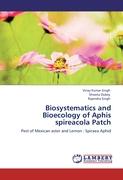- Start
- Biosystematics and Bioecology of Aphis spireacola Patch
Biosystematics and Bioecology of Aphis spireacola Patch
Angebote / Angebote:
Aphids or plant lice, are small, soft bodied, sucking insects that feed on plant fluids. Heavy infestations reduce plant growth. Honey dew produced by Aphids makes leaves and flowers sticky and acts as a substrate for black sooty fungus. Their tremendous damaging potential related to their high breeding capacity, polymorphism, parthenogenetic and host alteration. About 4700 aphid species are known worldwide. About 803 species/subspecies belonging to 207 genera represents Indian Aphididae. The desert area represents less number of aphids species. The green citrus aphid Aphis spiraecola Patch (homoptera: Aphididae) is one of the most important polyphagous species found in India, is cosmopolitan. Aphis spiraecola is pestiferous over 65 plant genera especially Asteraceae, Brassicaceae, Cucurbitaceae, Fabaceae, Malvaceae, Polygonaceae, Rosaceae, Rubiaceae, Rutaceae and Solanaceae. Aphis spiraecola is pest of Mexican aster and Lemon, damages directly or indirectly mainly in Northeastern Uttar Pradesh, India. The biosystematical and bioecological study of the aphids furnishes useful taxonomical, biological and ecological infestation and is necessary for formulating and control programme.
Folgt in ca. 5 Arbeitstagen

